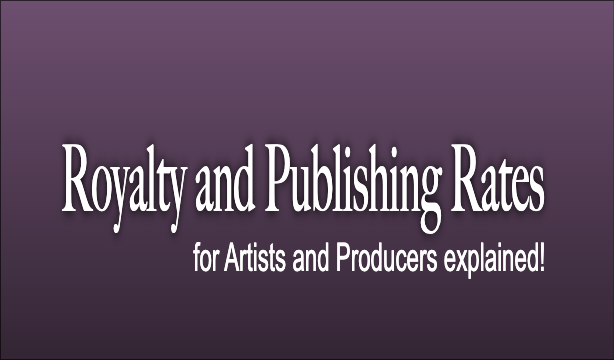In the music industry, understanding royalty and publishing rates is crucial for both artists and producers. These rates determine how much money individuals receive for their creative contributions to a song or album. Here, we’ll break down the current landscape of royalty and publishing rates for artists and producers.
Royalty Rates for Artists
1. Mechanical Royalties:
Mechanical royalties are paid to songwriters and music publishers for the physical or digital reproduction of a copyrighted work. In the United States, the mechanical royalty rate is set by the government and is currently at 9.1 cents per copy for songs that are five minutes or less. This rate is typically paid to publishers, who then distribute a portion to the songwriters.
2. Performance Royalties:
Performance royalties are earned when a song is performed or broadcasted publicly. These royalties are collected by Performance Rights Organizations (PROs) such as ASCAP, BMI, and SESAC in the United States. The rates for performance royalties vary and depend on factors such as where the song is played (radio, TV, live performance) and the audience size.
3. Streaming Royalties:
Streaming royalties have become a significant source of income for artists in recent years. However, the rates can vary widely depending on the streaming platform and the artist’s contract. On average, artists can expect to earn between $0.003 and $0.005 per stream on popular platforms like Spotify and Apple Music.
4. Sync Licensing:
Sync licensing involves the use of music in films, TV shows, commercials, and other visual media. The rates for sync licenses vary greatly depending on the popularity of the song, the duration of its use, and the media platform. Sync licensing can be a lucrative source of income for artists, especially if their music is featured in high-profile projects.
Publishing Rates for Producers
1. Producer Royalties:
Producers typically earn royalties based on their contribution to a song’s composition and production. The standard producer royalty rate is around 3% to 5% of the song’s revenue, although this can vary depending on the producer’s level of experience, negotiation skills, and the artist’s contract terms.
2. Advance Payments:
In addition to royalties, producers may also receive advance payments from record labels or artists. These advances are typically recoupable, meaning they must be paid back through future royalties earned from the project.
3. Points on Record Sales:
Producers may negotiate for points on record sales, which entitle them to a percentage of the revenue generated from album sales. The number of points awarded can vary depending on the producer’s level of involvement in the project and their bargaining power.
4. Publishing Deals:
Some producers also enter into publishing deals with music publishers, where they assign a portion of their publishing rights in exchange for upfront payments and assistance with licensing and royalty collection. Publishing deals can provide producers with additional income streams and opportunities for career advancement.
Conclusion
Understanding royalty and publishing rates is essential for artists and producers to ensure they are fairly compensated for their creative contributions. With the rise of digital streaming and the evolving music industry landscape, it’s important for individuals to stay informed about current rates and industry trends to maximize their earning potential. By negotiating favorable contracts and leveraging multiple revenue streams, artists and producers can build sustainable careers in the music industry.


